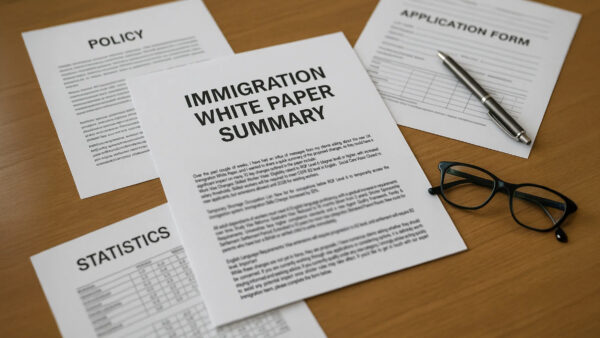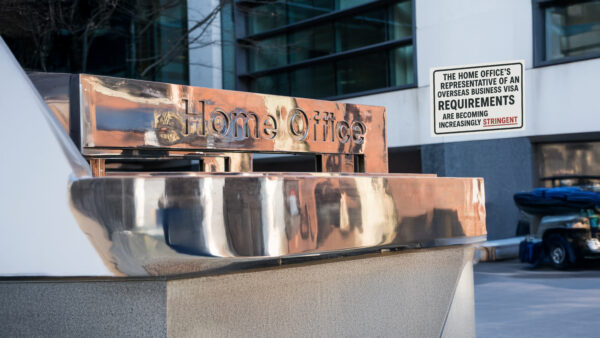The UK’s architectural sector has long been an essential contributor to the built environment, shaping cities, housing, and infrastructure projects that support economic growth. However, recent changes to post-Brexit visa salary rules have introduced significant recruitment challenges for architecture firms across the country.
The removal of architecture from the Shortage Occupation List and the increase in the minimum salary threshold for visa sponsorship from £26,000 to £45,900 have placed many firms in a difficult position. These changes, intended to reduce dependency on overseas labour, have instead exacerbated an existing skills shortage, impacting both the ability of firms to hire internationally and the broader goals of the UK’s construction and housing agenda.
At Quastels, we work closely with businesses and professionals navigating the UK immigration system, and we recognise the pressing need for reform in response to these challenges.
The Challenges Facing Architecture Firms
1. A Salary Threshold That Exceeds Industry Norms
The increased salary threshold disproportionately affects the architecture sector, where early-career professionals, particularly recent graduates, earn well below the new requirement. Many architectural practices, particularly small and mid-sized firms, find themselves unable to offer salaries that meet the sponsorship criteria. This has led to a talent bottleneck, where highly skilled international graduates- many of whom have studied and trained in the UK- are unable to remain in the country due to visa restrictions.
2. Impact on the UK’s Housing and Infrastructure Goals
The government has set ambitious housing targets, aiming to construct 1.5 million new homes over the next five years. However, achieving these objectives requires a robust and diverse workforce, including skilled architects who can contribute to complex planning, design, and urban development projects. By limiting access to international talent, the new visa rules risk slowing down progress in housing and infrastructure, creating further strain on the sector.
3. Increased Costs and Administrative Burden on Employees
Firms that wish to sponsor international architects must now budget for significantly higher salaries, which is not always financially viable, especially for smaller practices. Additionally, the administrative process for obtaining a sponsor licence remains cumbersome, requiring firms to navigate complex compliance requirements. Many companies that previously relied on international talent have now been forced to reconsider their recruitment strategies or face staffing shortages.
4. The Competitive Disadvantage for UK Firms
In a globalised industry, talent moves freely to where opportunities are most accessible. The UK risks falling behind other countries, such as Canada and Australia, which have more flexible immigration policies for architects and other skilled professionals. The inability to attract and retain global talent puts UK architecture firms at a competitive disadvantage, both in terms of securing high-profile projects and fostering innovation within the sector.
The Case for Policy Reassessment
At Quastels, we strongly advocate for a measured and pragmatic approach to immigration policy, ensuring that the UK remains an attractive destination for skilled professionals while also addressing workforce concerns. We believe that the following reforms should be considered:
- Reinstating architecture on the Shortage Occupation List– Recognising the sector’s ongoing need for skilled professionals and allowing firms to recruit internationally at a more sustainable salary level.
- Adjusting the salary threshold– Introducing sector-specific salary requirements that reflect the economic realities of each industry, rather than a blanket threshold that disproportionately impacts architecture and other creative professions.
- Streamlining the sponsorship process– Reducing administrative barriers for businesses looking to hire international talent, making it more efficient and cost-effective to recruit skilled workers from abroad.
- Enhancing post-study visa routes– Ensuring that international architecture graduates trained in the UK have a clear pathway to remain and contribute to the workforce, rather than being forced to leave due to restrictive visa policies.
How Quastels Can Assist
We understand the critical importance of hiring and retaining the right talent, and we work closely with architecture firms, professionals, and business leaders to navigate these new challenges.
Our specialist business immigration team provides:
- Strategic advice on sponsorship and visa options for firms looking to recruit international talent.
- Assistance with sponsor licence applications to ensure compliance with Home Office regulations.
- Support for international professionals seeking clarity on their immigration status and future pathways to remain in the UK.
- Advocacy for policy change, engaging with stakeholders to promote a more sustainable immigration framework for the architecture sector.
Conclusion
The recent changes to visa salary rules represent a significant shift in UK immigration policy, but they also raise concerns about the long-term impact on industries that rely on international expertise. The architecture sector is a prime example of how rigid immigration policies can create unintended consequences, hindering recruitment, innovation, and economic growth.
A more tailored, sector-specific approach is essential to ensure that the UK continues to attract and retain top-tier architectural talent, supporting both the industry and the broader objectives of housing and infrastructure development.
Contact our team today to discuss your immigration needs and explore the best strategies for securing talent in the evolving post-Brexit landscape.









